
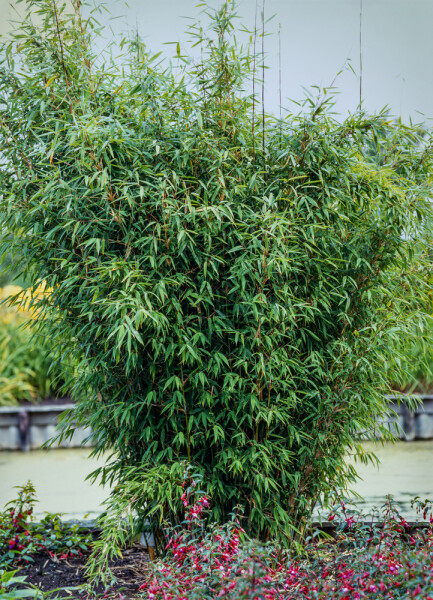

60-80

4
Updated on 10 September 2025
We regret to inform you that we are currently unable to ship orders to the United Kingdom. We anticipate being able to resume shipments at the beginning of 2026.
Fargesia nitida hedge is an elegant, non-invasive bamboo perfect for creating a tall hedge. It grows 50-75 cm annually, providing quick privacy. Ideal for Oriental gardens, this evergreen plant thrives in USDA zone 6a, withstanding temperatures as low as -23.3°C.








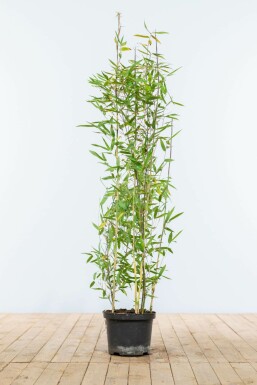
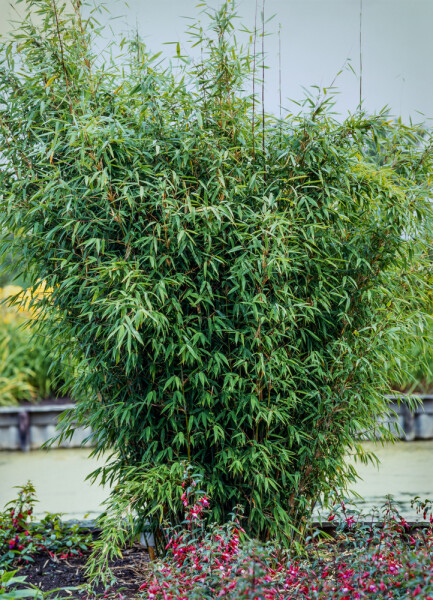


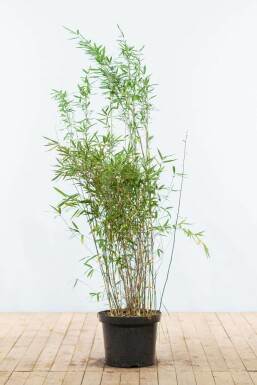
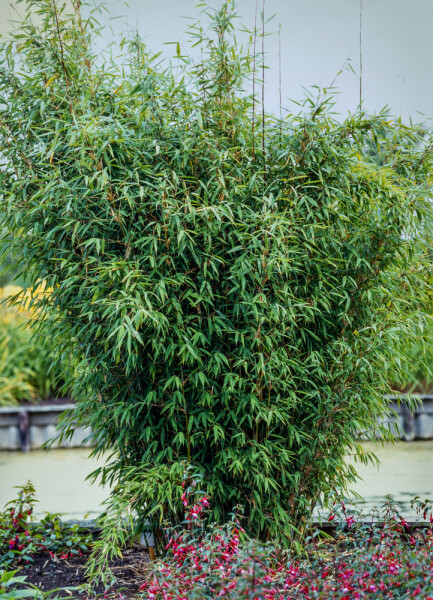


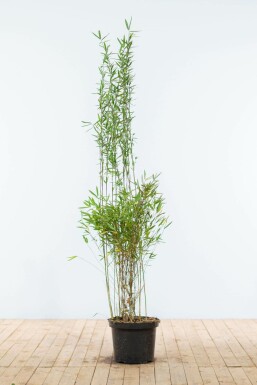
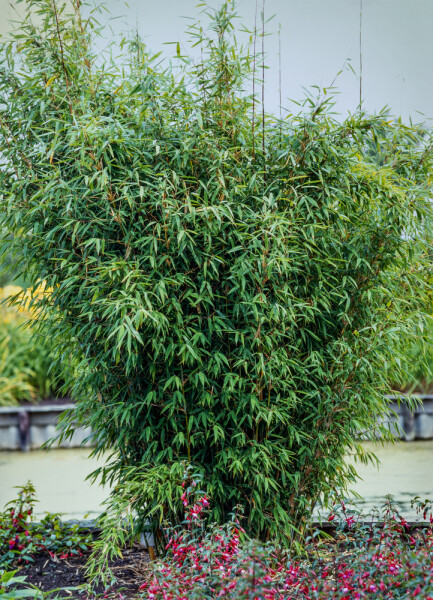






Fargesia nitida hedge is a popular choice for creating a beautiful and functional garden. This plant belongs to the Fargesia genus and is commonly known as Chinese fountain bamboo. It is a non-invasive bamboo, making it ideal for gardens without the worry of it spreading uncontrollably. The elegant appearance of the nitida bamboo adds a touch of sophistication to any garden setting. It is particularly well-suited for Oriental gardens, where its graceful form can be fully appreciated. Additionally, this hedge plant is not sensitive to diseases, ensuring a healthy and robust growth. Fargesia nitida hedge is perfect for creating a tall hedge, providing privacy and a natural barrier. It can also be used as a solitary plant to make a striking focal point in the garden. This versatile plant is an excellent choice for those looking to enhance their garden with a touch of elegance and practicality.
The Fargesia nitida hedge, also known as fountain bamboo, is an evergreen plant that is perfect for creating a lush, green hedge. Its vibrant green leaves are not only visually appealing but also provide a dense cover, making it an excellent choice for privacy. This hedge plant thrives in both half-shade and sunny locations, offering flexibility in garden design. With a growth rate of 50-75 cm per year, the Fargesia nitida is considered a fast-growing hedge, allowing for quick establishment in the garden. The mature height of the Fargesia nitida hedge can be managed through regular pruning, ensuring it fits perfectly into any garden space. Its upright growth habit and dense branching make it ideal for those looking for a tall hedge that offers both beauty and functionality. Regular trimming not only helps maintain the desired height but also enhances the plant's density, ensuring it becomes quickly sight-tight. For those interested in a fast-growing hedge, the Fargesia nitida is a top contender among hedging plants. Its ability to adapt to different light conditions and its rapid growth make it a versatile and practical choice for any garden.
Fargesia nitida hedge, also known as fountain bamboo, is a versatile plant suitable for creating a tall hedge. It thrives in USDA zone 6a, enduring temperatures as low as -23.3°C. However, frost timing and location, such as soil and wind exposure, can affect its hardiness. This plant adapts well to all well-drained soil types, ensuring the ground is airy enough for roots to breathe. Ideal soil moisture is crucial; too much water can harm the plant, so proper drainage is essential.
Fargesia nitida does not bloom, making it a low-maintenance choice for gardens. It is non-toxic, posing no threat to humans or animals, making it safe for gardens with children and pets. This bamboo is excellent for biodiversity, providing shelter for birds and attracting bees and butterflies. Its main ornamental value lies in its dense, lush foliage, which offers privacy and a serene garden atmosphere. Fargesia nitida can be easily combined with other hedging plants, enhancing the garden's aesthetic. When planting, the size of the plant at delivery determines how many are needed per metre. For a dense hedge plant, refer to plant properties for spacing guidelines. Consider Fargesia nitida for a reliable and attractive addition to any garden hedge.
The Fargesia nitida hedge is a popular choice for creating a tall hedge in gardens. It is known for its unique features and benefits:
All advantages:
All disadvantages:
Heijnen has the following Fargesia nitida hedge plants in its range:
Looking for a different type of bamboo? Below you will find possible alternatives within the bamboo genus:
We would like to provide some tips on how to plant and care for a Fargesia nitida. By following these tips, you can be sure to enjoy your Fargesia nitida for a long time.
Fargesia nitida hedge, also known as fountain bamboo, thrives best in a location with partial shade or full sun. It is important to choose a spot that is sheltered from strong winds. The ideal soil for this hedge plant is well-drained, which helps prevent waterlogging. This bamboo can grow on all soil types as long as they are well-drained. It prefers slightly moist conditions but can tolerate drier soils if necessary. Using Fargesia nitida as a tall hedge or as a solitary plant in the garden can enhance its beauty. A well-chosen location ensures better growth, richer foliage, and a healthier plant. The right spot is crucial for the successful growth and bloom of this nitida bamboo, making it a popular choice among hedging plants.
When planting the Fargesia nitida hedge, proper soil preparation is essential for growth. The soil should be well-tilled to improve water drainage and nutrient absorption. This step is crucial before planting, as it ensures the plants receive adequate nutrients and water. Mixing compost into the existing soil can enhance its quality. Pot-grown plants like the Fargesia nitida hedge can be planted year-round, except during frost. Plants with a jute sack around the root ball should be planted with the sack intact. After planting, it's important to water the plants until they are well-rooted. The size of the plant determines how many can be planted per square metre. Soil preparation is key to successful planting. For more details, refer to the planting instructions for the Fargesia nitida hedge.
Pruning a Fargesia nitida hedge is important to maintain its shape and health. Regular trimming helps keep the hedge dense and prevents it from becoming too tall. Pruning also encourages new growth, making the hedge look lush and vibrant. The best time to prune a Fargesia nitida hedge is in late spring or early summer. It is usually enough to prune once a year, but if the hedge grows quickly, a second trim in late summer might be needed. Use sharp shears or a hedge trimmer for clean cuts. Good tools are essential to avoid damaging the hedge plant. When pruning, cut back any dead or damaged stems and shape the hedge to the desired height and width. This will ensure the Fargesia nitida hedge remains a beautiful feature in the garden.
Fargesia nitida, known as fountain bamboo, is a popular choice for a hedge. This plant has a moderate water need. It is best to water deeply rather than giving a little every day. Check the soil to see if the plant really needs water. Watering in the early morning or late afternoon helps reduce evaporation. Ensure excess water can drain away, whether the plant is in the ground or a pot. Drip irrigation works well once the plant is fully rooted, but in the beginning, additional watering is necessary. Fargesia nitida is not highly drought-resistant, so regular watering is important. This tall hedge plant thrives with proper care, making it an excellent choice for hedging plants.
Fargesia nitida hedge, also known as fountain bamboo, benefits greatly from timely fertilisation. Fertilising helps these hedging plants grow strong and healthy, ensuring vibrant foliage and robust growth. Using organic fertilisers is crucial as they prevent root and leaf burn, which can occur with chemical fertilisers if used incorrectly. Heijnen's Organic Starter Fertilizer and Organic Maintenance Fertilizer are recommended for these plants. Fertilising should be done twice a year, in spring and summer, to support the hedge's growth cycle. The amount of fertiliser depends on the size of the hedge plant, so adjust accordingly. Fertilisers are absorbed when dissolved in water, so during dry periods, it's important to water the garden to help nutrients reach the roots. This ensures the Fargesia nitida hedge remains a tall hedge, providing a lush and attractive addition to any garden.
Fargesia nitida, known as fountain bamboo, is a popular choice for creating a tall hedge. This non-invasive bamboo is ideal for hedging plants due to its dense growth and elegant appearance. It thrives in various conditions, making it a versatile hedge plant for gardens.
To maintain the health and vigor of Fargesia nitida, division is a vital gardening practice. Ideally carried out in the more temperate conditions of spring or autumn, the process begins with the plant being carefully lifted from the soil. Afterward, gardeners should separate the clump into smaller portions, ensuring each has a sufficient root system. Replanting these sections promptly will rejuvenate growth and ensure the bamboo continues to provide a dense, evergreen screen. This method of propagation not only stimulates new growth but also helps control the size and spread of the plant, suitable for its use as a hedge or solitary feature.
Fargesia nitida hedge is an excellent choice for creating a tall hedge. This non-invasive bamboo is perfect for Oriental gardens and offers an elegant appearance. It grows quickly, reaching 50-75 cm per year, and is hardy to -23.3°C. As an evergreen, it provides year-round privacy. Choose this hedge plant from Heijnen for a beautiful, disease-resistant addition to any garden.
